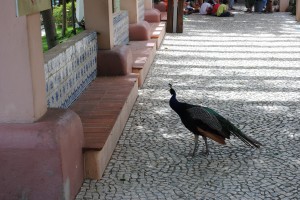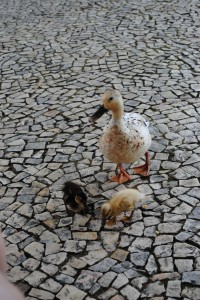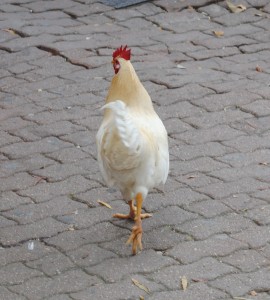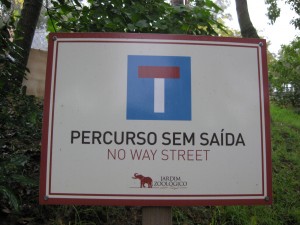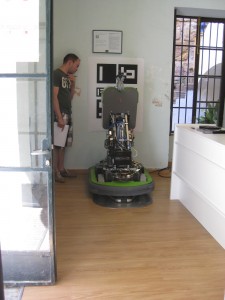
A robot like FROG meets various terrain types in its scenarios. The robot must maintain a good performance on all of these terrains and while moving from one to the other. Safety issues raised by the terrain types for the visitors that may follow the FROG are not a matter that the FROG project has to deal with. However, the fact that these are sites that draw many visitors does mean that these terrains are well-maintained. Both sites have outdoor areas that may be wet due to rain, cleaning operations or irrigation of the plants.
The outdoor and indoor areas that the FROG visits on its missions at the Royal Alcazar in Seville and in the Lisbon Zoo present the following types and conditions.
At the Royal Alcázar, none of the surfaces that the FROG robot has to traverse are loose laid. All outdoor paving materials are set in concrete. The gaps between bricks or stones are filled with concrete. Some grouting is flat, some has profiling lines as if drawn with a finger in wet cement. Indoors, some marble or tiled floors are grouted with special materials. Other (marble) tiles are laid so close together and what little grouting there is is so highly smoothed that, to the touch, there is only one surface.
Both indoor and outdoor surfaces are kept scrupulously clean – most of the work being done in the early morning before visitors arrive and maintained to a high standard during the day. Even the numerous pigeons nesting in the crevices of the outside walls only manage to accummulate a small number of droppings …
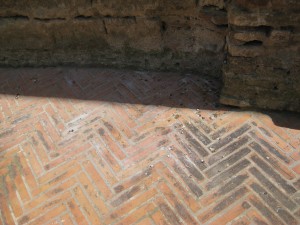
… before this happens:
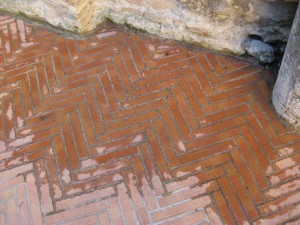
Mission terrains – Royal Alcázar, Seville
After moving from the stainless steel docking station, the robot turns and leaves the shop with its wooden laminate floor passing over a stainless steel strip and a brick doorstep, onto a checkered courtyard of natural flagstones and cobbles set in concrete.
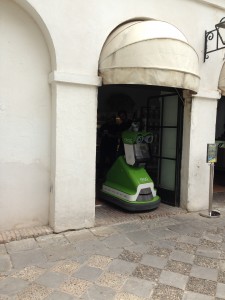
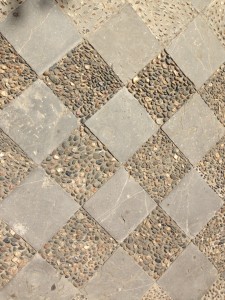
From there the mission moves into the Lion’s Courtyard, moving from a chequer of flagstones and cobbles in concrete, across bricks laid in concrete and onto smooth red bricks laid in concrete in a herringbone pattern.
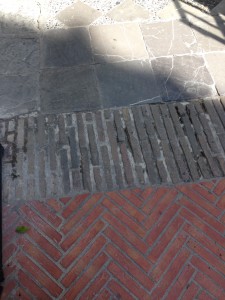
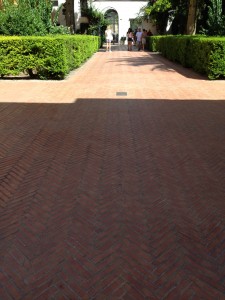
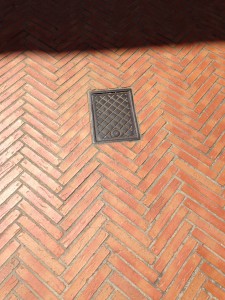
The herringbone laid smooth red bricks continue through the arches (down an incline of 3°) into the Hunting Court – and area of herringbone laid dark red brick fields between smooth white stone slab borders.
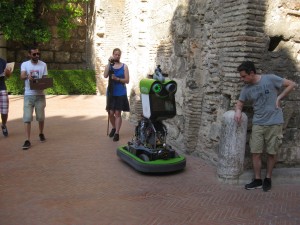
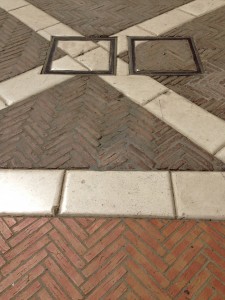
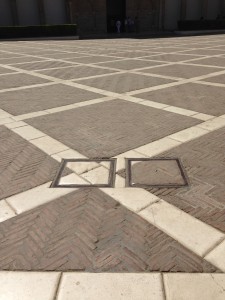
On leaving the Hunting Courtyard, the mission continues between curved curbs and up a 6° incline into a covered walkway.
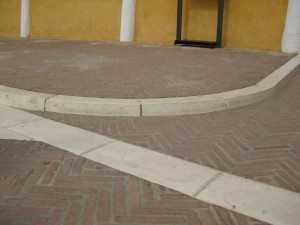
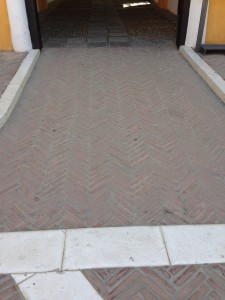

Looking up:
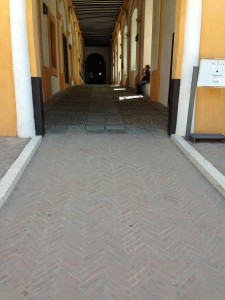
Looking down:
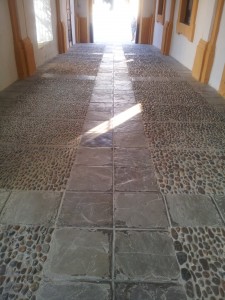
In the middle of this walkway there is a section of pattern laid cobblestones in concrete marking the position of gates leading onto the Crossing Courtyard.
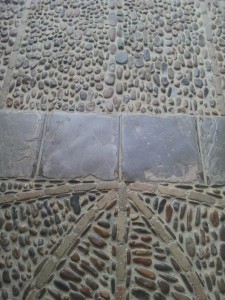
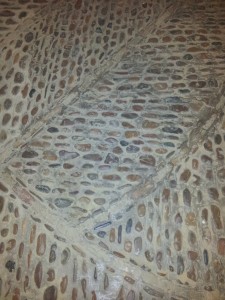
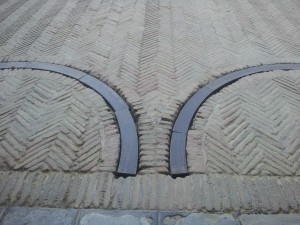
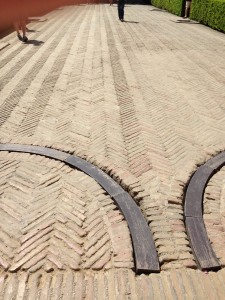
Looking back to the gates:
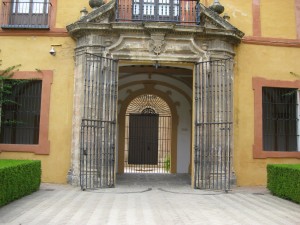
Detail of one of the raised air vent grates along the path:
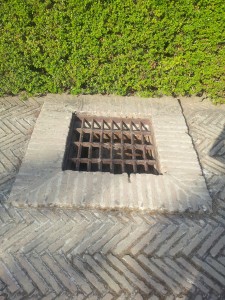
At the other end of the Crossing Courtyard there is a covered space – one of the potential spots for projection presentations.
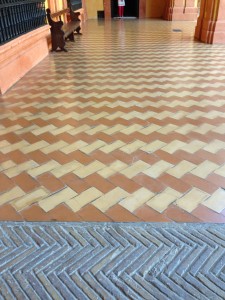
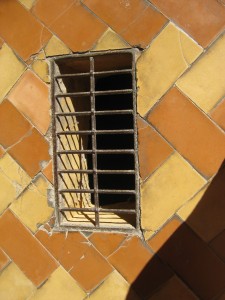
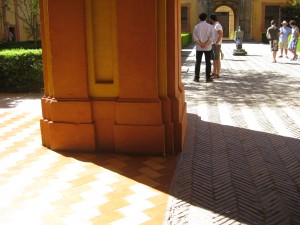
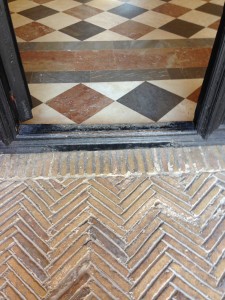
The route now passes from outdoors onto the close-laid marble floor in Tapestry Room.
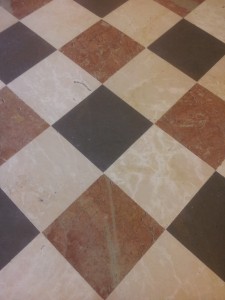
And from the Tapestry Room to the Vault Room.
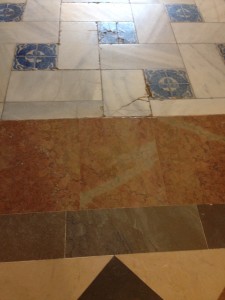
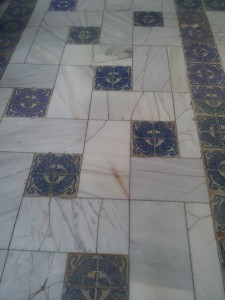
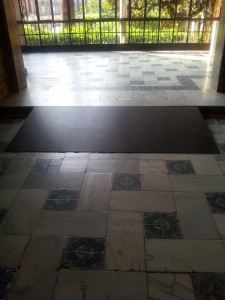
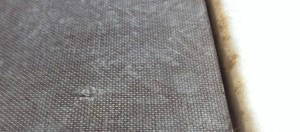
The marble and ceramic tile surface continues…
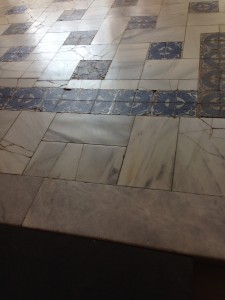
… to where the route goes outdoors to one of the possible end points of the mission.
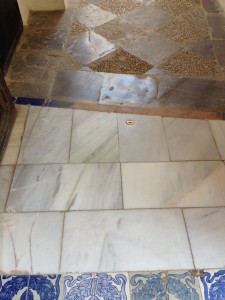
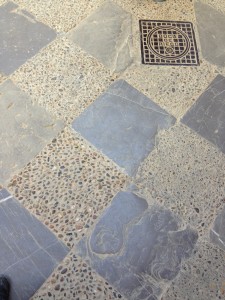
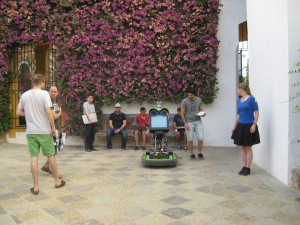
And from this end point, back to the lab.
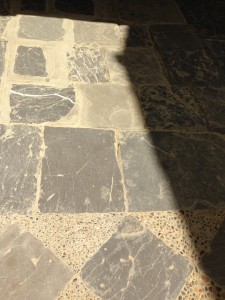
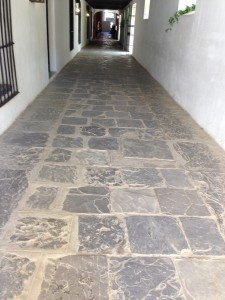
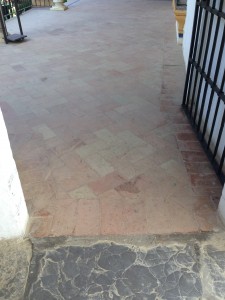
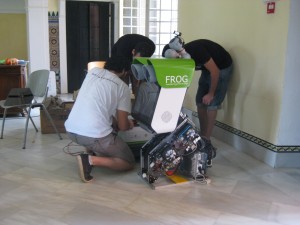
Hazards that need to be avoided by simply telling the navigation: “Don’t go there!”

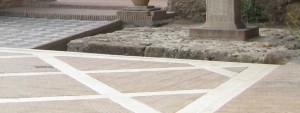
Mission terrains – Lisbon Zoo
The terrains encountered at the Lisbon Zoo are somewhat more rugged. The FROG first has to drive from one of the two lab locations to the start of the mission.
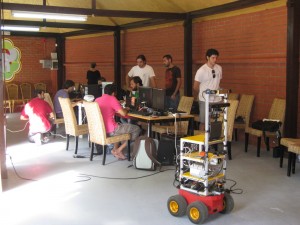
The floor of the lab accommodation near the Main Entrance of the Zoo is polished concrete while the lab accommodation in the Educational Department is covered with green Marmoleum.
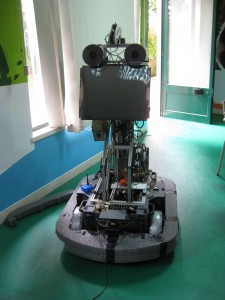
There are various sorts of paving outside lab 1 – both stone and brick – leading on to a wide variety of surfaces.
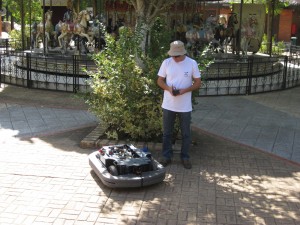
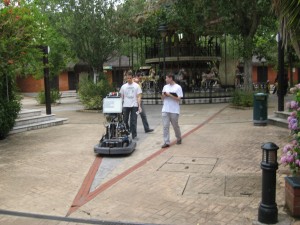
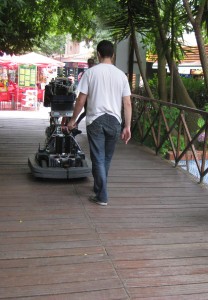
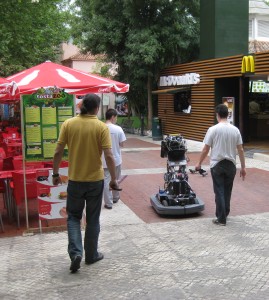
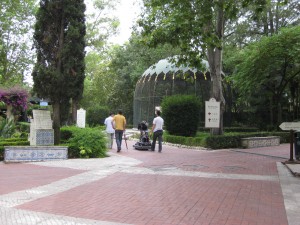
The route from Lab 2 starts with a wooden ramp – this is covered with an anti-slip rubber surface.
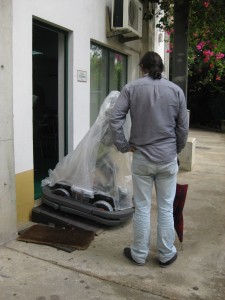
Large sections of this route are paved with interlocking paving bricks.
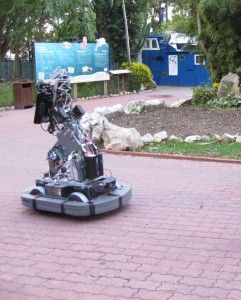
Eventually the FROG reaches the the entrance to the Valley of the Tigers where the mission starts. But, of course, unlike Review committees, FROG cannot climb steps.
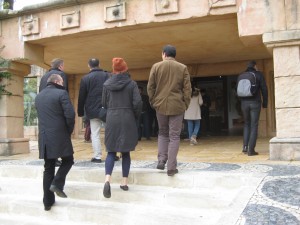
FROG has to take the ramp.
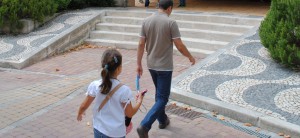
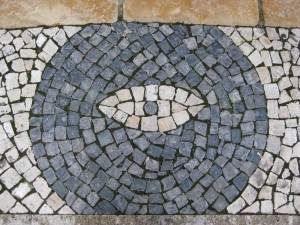
The Lisbon Zoo mission begins on large slabs set in concrete.
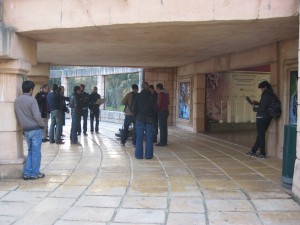
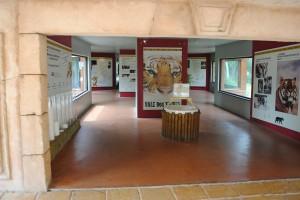
When the FROG leaves the Valley of the Tigers it passes over a section of interlocking brick paving, a grate covering a drainage channel onto a bitumen path with fine aggregate.
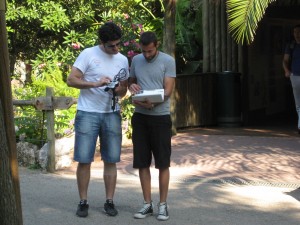
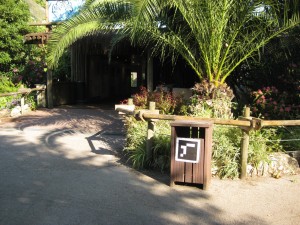
From here the mission carries on to the Birds. This section of the route stays on bitumen with fine aggregate and has some slight inclines.
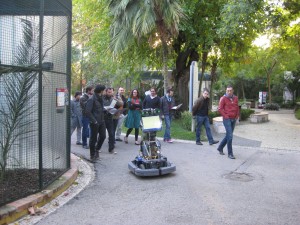
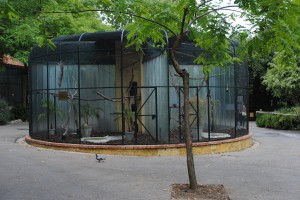
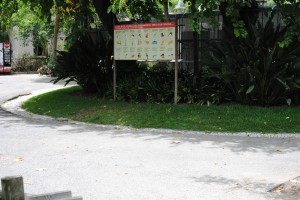
The route continues past the Sea Lions, staying on bitumen with fine aggregate.
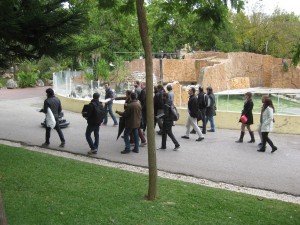
The next presentation point along the route, The Gorilla’s Belvedere, is on slightly inclined interlocking paving bricks. The FROG stops somewhere in this corner.
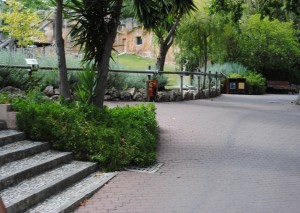
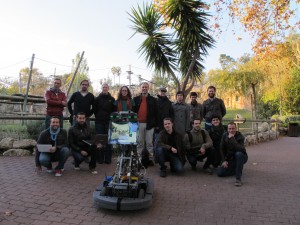
And after the corner the path climbs the slight incline, passing from interlocking paving bricks to Portuguese pavement over separating wide concrete bands.
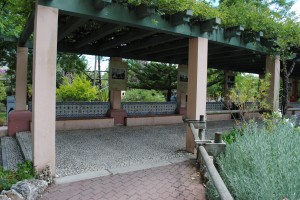
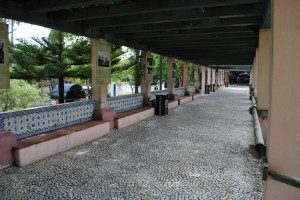
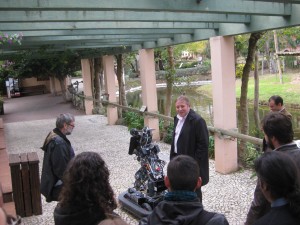
After the pergola walk, the route follows around to the right over interlocking bricks, through impressive gate posts, on towards the Primate Temple.
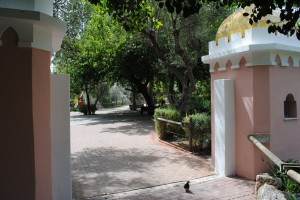
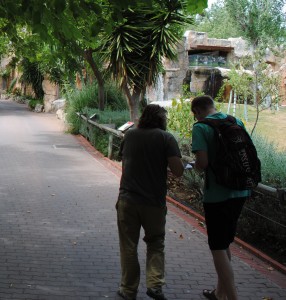
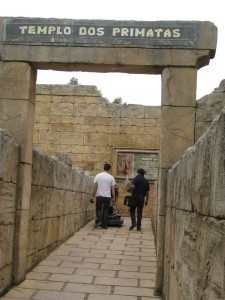
Once inside the Temple, the surface is smooth concrete painted red.
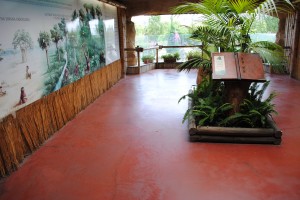
On leaving the Primate Temple the route winds over a wooden separator onto large stone slabs set in concrete, quickly crossing a decorative line of glazed bricks, a drainage grate set in concrete and once again onto interlocking bricks.
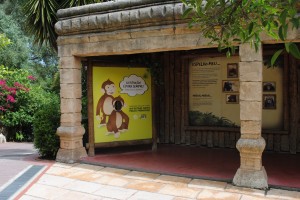
The route now follows path downwards and the robot makes its way back to the starting point.
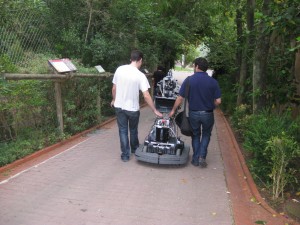
Hazards in Lisbon tend to be feathered or fluffy:
But, of course, there are also no-go areas:
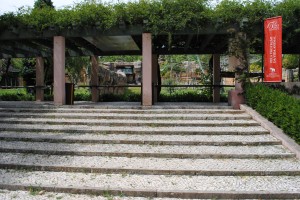
Here is a film of whole FROG Tour in the Lisbon Zoo during the Second Year Review.
With thanks to the Visitor Safety in the Countryside Group for their online information on external pedestrian path surfaces!
